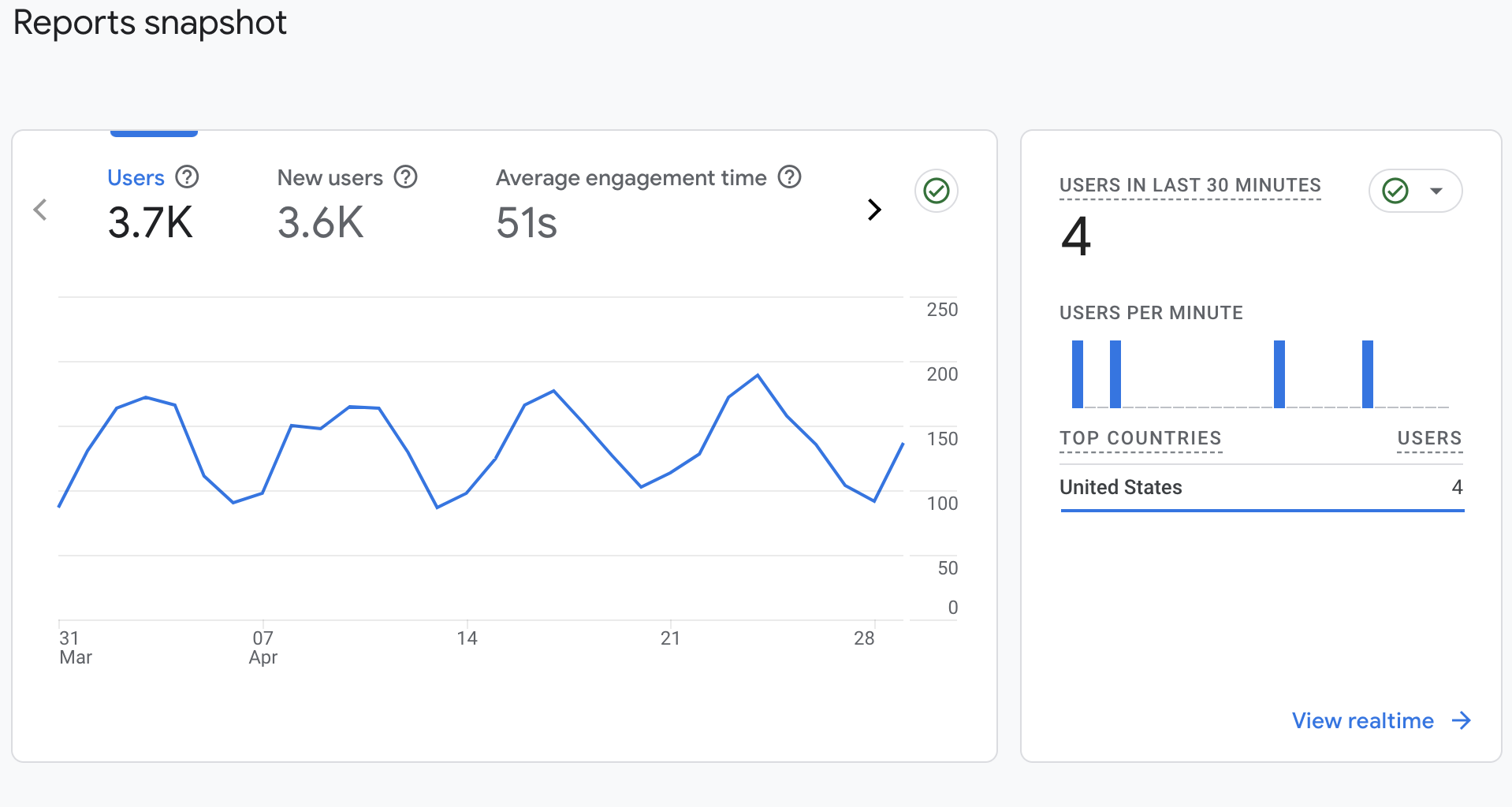
Understanding Google Analytics: Users, Sessions, and Pageviews Explained
Demystifying Google Analytics: A Deep Dive into Users, Sessions, and Pageviews
Hey there! I’m Jen Ruhman, and I run Jen Ruhman SEO here in sunny San Diego. As someone who’s passionate about helping businesses flourish online, I know how important it is to understand the different metrics that Google Analytics throws your way.
Today, I want to unpack three fundamental ones: Users, Sessions, and Pageviews. Let’s break down what these terms mean and why they matter for your business.

Users: Unveiling the Who’s Who of Your Website
Who are “Users” in Google Analytics?
Imagine your website as a bustling marketplace. Every unique visitor who walks through those virtual doors is considered a User in Google Analytics. Whether you’re running a booming online store or a niche blog, knowing how many individual people are checking out your content is essential. Each visitor gets a special code assigned to them, like a secret handshake, so Google Analytics can track their interactions even if they come back for another visit.
Why Users Matter
The number of Users tells you how far your website’s reach extends. Are you attracting a fresh wave of visitors? Is your marketing bringing in new faces? The Users metric helps answer these questions. Let’s say you notice a steady increase in Users – that’s a great sign! It means your website is attracting new people, potentially due to your marketing efforts. But if the number stays flat, it might be time to re-evaluate your strategies to draw in a wider audience.
Sessions: Gauging Engagement on Your Website
What Exactly is a “Session”?
Think of a session as a single customer’s shopping spree in your online store. It encompasses all their activities during their visit, from browsing different sections to making a purchase or interacting with features. A session typically starts when a user lands on your website and ends after 30 minutes of inactivity (like leaving the store for a coffee break) or when they close the window. If the same user returns later, it’s counted as a new session.
Why Sessions Are Important
Sessions offer a window into how users engage with your website. By looking at the number of sessions alongside the number of Users, you can see if visitors are coming back and how often. This insight is crucial because it tells you how much people are enjoying their time on your site. Engaged and loyal visitors are key indicators of a successful website, and sessions help you measure that.
Pageviews: Keeping Track of Content Consumption
What Counts as a “Pageview”?
Every single time a user loads a page on your website, it’s counted as a pageview. This metric goes beyond just tracking how many times your homepage or a specific blog post is viewed. It even includes multiple views of the same page by the same user during their visit, just like if someone keeps revisiting the same product page while contemplating a purchase.
Why Pageviews Are Valuable
Pageviews offer a straightforward way to gauge how much your content is being consumed. A high number of pageviews can indicate that your content is engaging and informative, or that your website is easy to navigate. On the other hand, if you have a lot of Users but low pageviews, it might be time to revisit how you’ve structured or presented your content. Maybe the information is hard to find, or the layout is confusing for visitors.
Going Beyond the Basics
While Users, Sessions, and Pageviews are the cornerstones, Google Analytics offers even more insights to dig deeper:
- Average Session Duration: This metric tells you how long users typically stay on your website on average. A longer duration suggests that your content is interesting and keeps visitors engaged.
- Bounce Rate: Imagine a visitor bouncing off your website like a ball hitting the wall. The bounce rate is the percentage of sessions where a user leaves after viewing only one page. A high bounce rate might indicate that your landing pages aren’t grabbing attention or that they don’t match what visitors were expecting.
- Conversion Rates: For businesses, the ultimate goal is to turn website visitors into paying customers or leads. Conversion rates measure how effectively your website achieves this goal. By analyzing this metric alongside Users, Sessions, and Pageviews, you can refine your website design and marketing strategies to boost conversions.
Putting It All Together: A Recipe for Website Success
Here at Jen Ruhman SEO, I believe that understanding these key Google Analytics metrics is a recipe for online success. By regularly monitoring Users, Sessions, and Pageviews, you gain valuable insights into how well your website attracts and retains visitors. This knowledge empowers you to make informed decisions that drive growth and enhance user experience.
Remember, each metric is like an ingredient in the recipe for your website’s success.
Beyond the Basics: Advanced Techniques to Unlock the Power of Google Analytics
We’ve explored the fundamental metrics of Users, Sessions, and Pageviews, but Google Analytics offers a treasure trove of even deeper insights for those willing to dig a little further. Here are some advanced techniques to unlock the full potential of this powerful tool:
Understanding User Demographics and Behavior
- Demographics: Uncover the age, gender, location, and even interests of your website visitors. This helps you tailor your content and marketing strategies to resonate with specific audiences. Imagine you run a travel blog, and your analytics reveal a surge of interest from young professionals. You can then cater your content towards budget-friendly travel hacks or weekend getaways.
- Behavior Flow: Visualize the journey users take on your website. This report shows you which pages they visit first, where they go next, and where they might drop off. By identifying common paths, you can optimize your website structure and navigation to guide users towards your desired goals, like making a purchase or subscribing to your newsletter.
- Site Search: Discover what users are actively searching for within your website. This can expose gaps in your content or areas where users might be facing difficulty finding the information they need. By addressing these gaps, you can improve user experience and ensure visitors find what they’re looking for.
Leveraging Audience Segmentation
Google Analytics allows you to segment your audience based on various criteria, such as demographics, interests, and behavior. This segmentation empowers you to create targeted marketing campaigns and website experiences. For example, you could segment users who have abandoned their shopping carts and send them a targeted email reminder with a special discount.
Taking Action with Goals and Conversions
- Setting Goals: Define specific goals for your website, such as increasing online sales, generating leads, or boosting video views. Google Analytics allows you to track conversions, which are actions taken by users that contribute to achieving these goals. This helps you measure the effectiveness of your website and marketing efforts.
- E-commerce Tracking: If you run an online store, e-commerce tracking provides valuable insights into your sales funnel. It allows you to track user behavior throughout the purchase journey, identifying areas for improvement, such as streamlining the checkout process or optimizing product pages for conversions.
Remember, Google Analytics is a powerful tool, but it doesn’t provide all the answers on its own. The key lies in interpreting the data and taking actionable steps.
Here are some additional tips to get the most out of your Google Analytics experience:
- Set Benchmarks: Establish baseline metrics for your website and track progress over time. This allows you to measure the impact of any changes you make to your website or marketing strategy.
- Stay Updated: Google Analytics is constantly evolving, with new features and reports being added regularly. Stay updated on the latest developments to leverage the full potential of the tool.
- Seek Help: If you’re feeling overwhelmed, don’t hesitate to seek help from a professional. Many digital marketing agencies and SEO specialists offer assistance in interpreting and implementing Google Analytics data.
By following these tips and techniques, you can transform Google Analytics from a data dashboard into a strategic roadmap for your online success.
At Jen Ruhman SEO, we’re passionate about empowering businesses to unlock the full potential of their online presence. Feel free to reach out if you have any questions or need assistance in navigating the world of Google Analytics. We’re here to help you turn website visitors into loyal customers and achieve your business goals.
Remember, your website is a living, breathing entity, and Google Analytics is a tool to understand its pulse. By consistently monitoring and analyzing your website’s performance, you can make informed decisions that keep your online presence thriving. Let’s embark on this journey together and turn your website into a powerful engine for growth!


